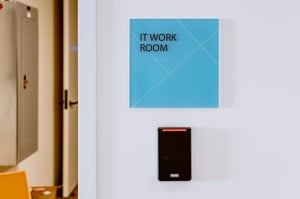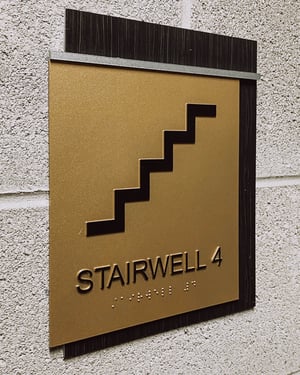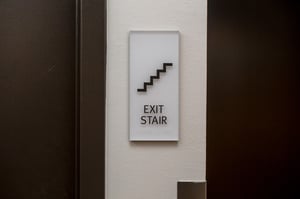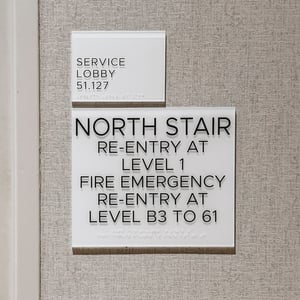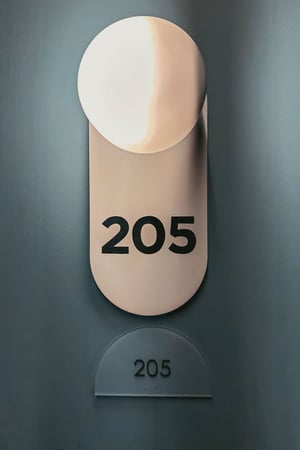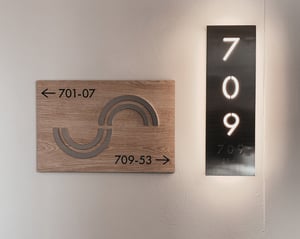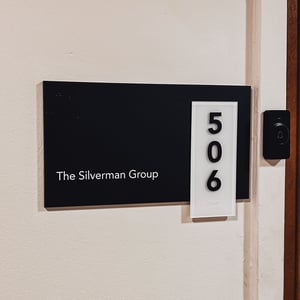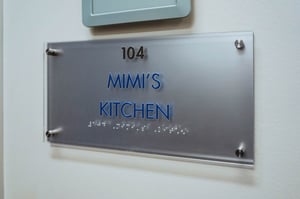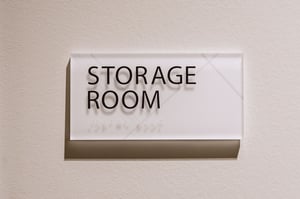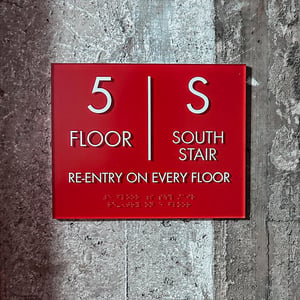
ADA COMPLIANT SIGNS AND TACTILE BRAILLE
ADA-COMPLIANT BRAILLE SIGNAGE
Accessible Design Meets Intentional Aesthetics.
Other signage solutions...
We believe accessibility and aesthetics should work beautifully together. ADA and wayfinding signage shouldn’t feel like an afterthought. It should complement the environment it lives in. From materials and finishes to typography and color, every detail can reinforce the character of a space. Whether you’re working on new construction or updating an existing facility, our in-house fabrication and printing capabilities allow us to match your existing styles and colors. And with access to a network of trusted suppliers, we can help bring consistency and cohesion to your signage program while supporting your team in meeting ADA signage requirements.
What You Need to Know About ADA Signage
The Americans with Disabilities Act (ADA) imposes strict requirements on signage in public buildings to ensure accessibility for individuals with disabilities. Compliance is essential for architects, general contractors, and anyone involved in building design and maintenance.
ADA SIGNAGE BEST PRACTICES
![]()
Download Cushing's ADA Signage Guide for detailed guidance on compliant mounting locations, tactile lettering, braille specs, and more. This six-page resource is designed to help your team navigate signage requirements with clarity and confidence.
KNOW YOUR ROLE IN ADA COMPLIANCE
![]()
Before beginning any signage project, it’s crucial to understand your team’s responsibilities under ADA law. Click below to review our disclaimer and learn more about what architects, contractors, and clients should know.
Types of Signage Covered under ADA
Identify rooms such as restrooms, offices, and storage areas; must include tactile lettering and braille.
Wall Mounted:
Guide individuals to key locations (e.g., elevators, exits); must use high-contrast visuals and accessible fonts.
Ceiling Mounted or Projected:
Hang above pathways to indicate locations such as departments, exits, or services; visibility from a distance is key.
Wall Mounted:
Provide important building info like hours of operation or emergency procedures; visual clarity and readability are essential.
Ceiling Mounted or Projected:
Display general or regulatory information in high-traffic areas; must be positioned for easy line-of-sight viewing.
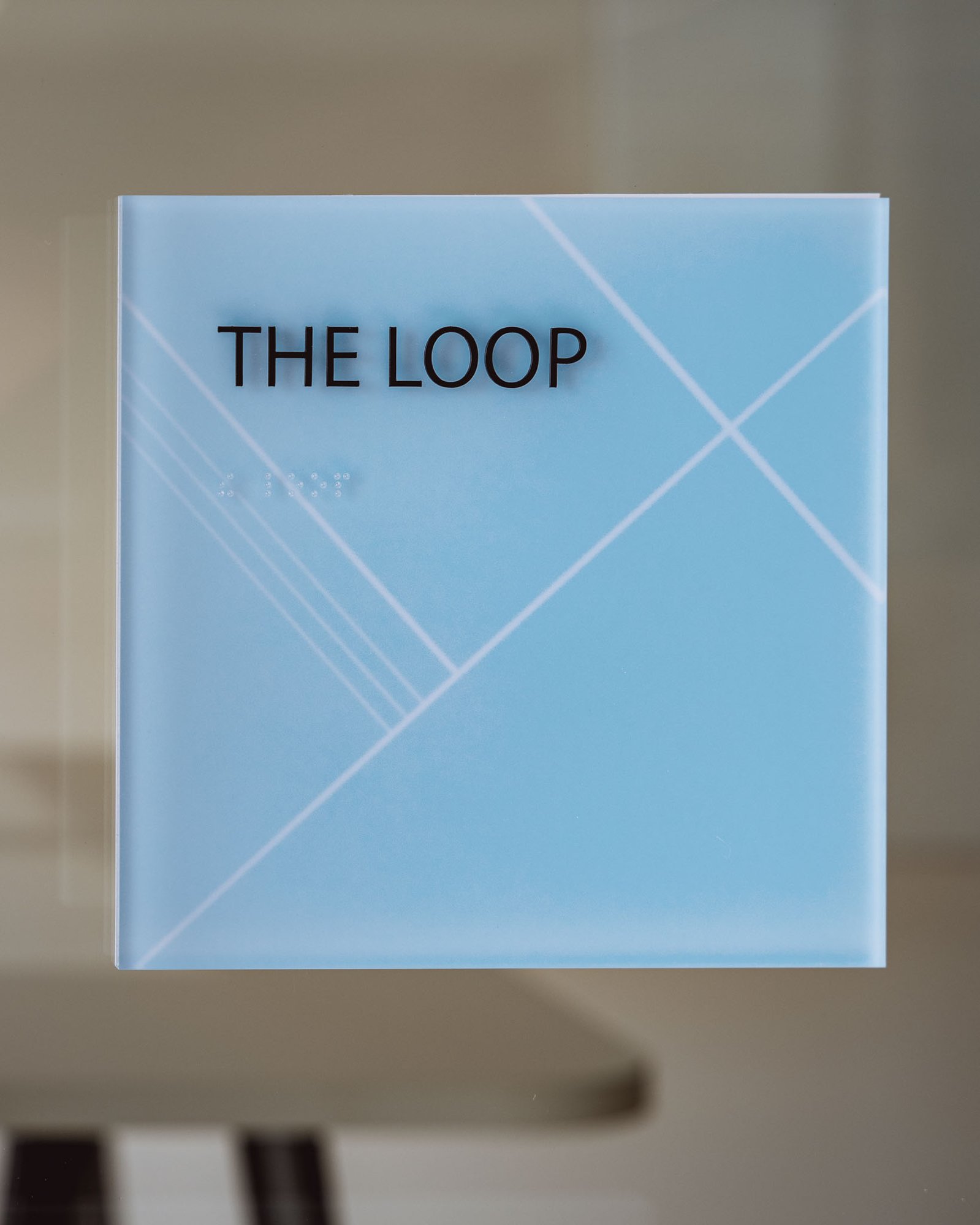
What ADA SIGNAGE Addresses
ADA signage is crucial for accessibility, providing essential information through tactile elements such as Braille, raised characters, and high-contrast color schemes. Our solutions cater to various needs, from permanent installations to temporary or non-compliant requirements. Our equipment produces the physical requirements set by the ADA. Custom software takes verbiage in your signs and creates braille messaging to match your text.
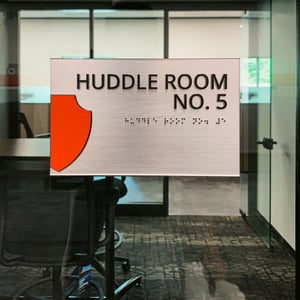
Braille Requirements
ADA-compliant Braille signage must adhere to specific dimensions, capitalization rules, and dot shapes to ensure readability for individuals with visual impairments. Our state-of-the-art equipment produces Braille signage to meet these stringent requirements, using your exact specifications.
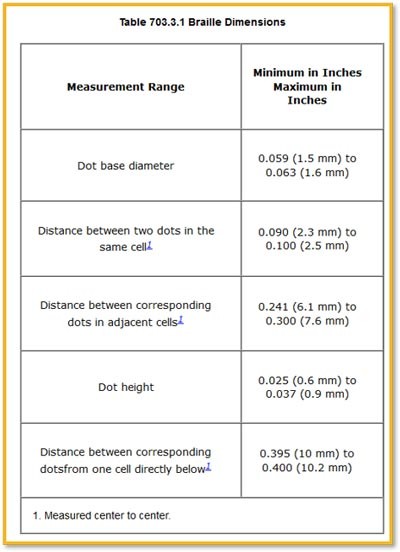
WHY CHOOSE CUSHING FOR ADA SIGNAGE?
Partner with us for hassle-free compliance:
- Expert Guidance: Our ADA specialists manage the complexities of ADA regulations, ensuring correct signage placement and type.
- Time Savings: Focus on core project tasks while we handle ADA signage details from start to finish.
- Comprehensive Service: From initial consultation to installation, we provide a seamless process to integrate compliant signage into your project.
Explore our detailed ADA compliance guide to understand the nuances of ADA signage requirements. This resource is essential for architects, contractors, and project managers aiming to achieve full compliance.
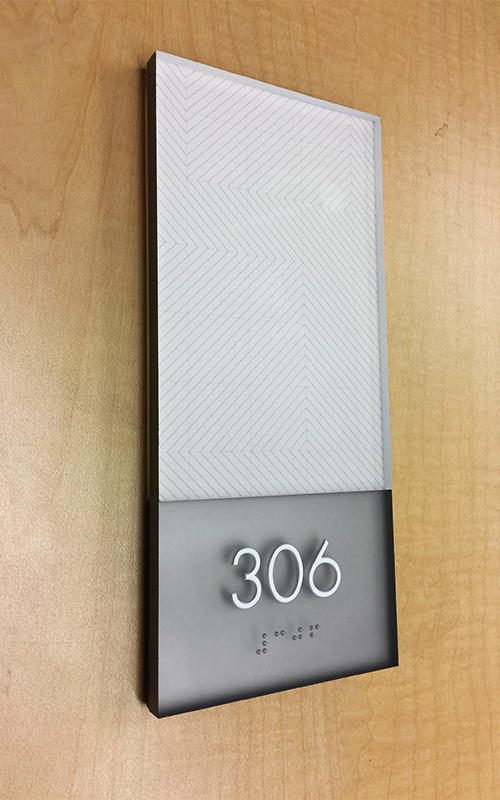
Accessible Design in Action
From color and texture to placement and typography, our team helps integrate accessibility signage into your environment’s visual language.
